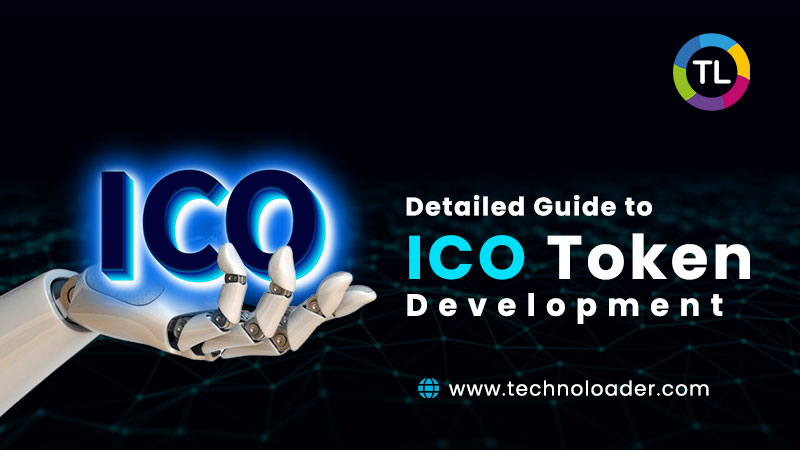-
Table of Contents
Transforming Reading Experiences in Education: The Evolution of E-Books
The Evolution of E-Books: Transforming Reading Experiences in Education
E-books have revolutionized the way we read and access information, particularly in the field of education. With the advancement of technology, traditional printed books are gradually being replaced by their digital counterparts. This evolution has brought about significant changes in the reading experiences of students and educators alike. In this article, we will explore the transformation that e-books have brought to education, including their benefits, challenges, and the future implications they hold.
The Impact of E-Books on Student Learning and Engagement in Education
The Impact of E-Books on Student Learning and Engagement in Education
In recent years, the rise of technology has revolutionized various aspects of our lives, including the way we read and learn. With the advent of e-books, traditional printed books are no longer the only option for students. E-books have transformed reading experiences in education, offering numerous benefits that enhance student learning and engagement.
One of the key advantages of e-books is their accessibility. Unlike printed books, e-books can be accessed anytime and anywhere with an internet connection. This means that students no longer have to carry heavy backpacks filled with textbooks. Instead, they can simply access their e-books on their laptops, tablets, or even smartphones. This convenience allows students to have all their study materials in one place, making it easier for them to study on the go.
Furthermore, e-books offer interactive features that enhance student engagement. Many e-books include multimedia elements such as videos, audio clips, and interactive quizzes. These features not only make the learning experience more engaging but also cater to different learning styles. For example, visual learners can benefit from videos and images, while auditory learners can listen to audio clips. The interactive quizzes also provide immediate feedback, allowing students to assess their understanding of the material.
In addition to multimedia elements, e-books also offer search and annotation features. With a simple keyword search, students can quickly find specific information within the e-book, saving them valuable time. Moreover, the annotation feature allows students to highlight important passages, add notes, and bookmark pages. These features promote active reading and help students organize their thoughts, making it easier for them to review and study the material later.
Another advantage of e-books is their cost-effectiveness. Traditional printed textbooks can be expensive, especially when multiple textbooks are required for different subjects. E-books, on the other hand, are often more affordable or even free. Many educational institutions and publishers offer e-books at a lower cost or provide them as part of a subscription service. This cost-effectiveness not only benefits students but also allows educational institutions to allocate their resources more efficiently.
Moreover, e-books are environmentally friendly. The production of printed books requires paper, ink, and energy, which contribute to deforestation and pollution. E-books, on the other hand, are digital files that do not require any physical resources. By switching to e-books, educational institutions can reduce their carbon footprint and promote sustainability.
Despite the numerous benefits of e-books, it is important to acknowledge that they are not without challenges. Some students may prefer the tactile experience of reading a printed book, and others may struggle with the distractions that come with digital devices. However, with proper guidance and support, these challenges can be overcome, and students can fully reap the benefits of e-books.
In conclusion, e-books have had a significant impact on student learning and engagement in education. Their accessibility, interactive features, search and annotation capabilities, cost-effectiveness, and environmental friendliness make them a valuable tool in the modern classroom. As technology continues to evolve, it is likely that e-books will continue to transform reading experiences, providing students with new and exciting ways to learn and engage with educational content.
How E-Books are Revolutionizing the Accessibility of Educational Resources
The Evolution of E-Books: Transforming Reading Experiences in Education
In today’s digital age, technology has revolutionized various aspects of our lives, including the way we read and access information. One significant development in this realm is the emergence of electronic books, or e-books, which have transformed reading experiences, particularly in the field of education. E-books have revolutionized the accessibility of educational resources, making learning more convenient, interactive, and engaging for students.
One of the most significant advantages of e-books is their accessibility. Unlike traditional printed books, e-books can be accessed anytime, anywhere, as long as one has a compatible device and an internet connection. This accessibility eliminates the need for physical copies, reducing the burden of carrying heavy textbooks and allowing students to access their reading materials with just a few clicks. This convenience is particularly beneficial for students who commute or have limited access to libraries or bookstores.
Moreover, e-books have made educational resources more affordable and cost-effective. Traditional textbooks can be quite expensive, especially when considering the frequent updates and revisions required to keep up with the ever-evolving knowledge in various fields. E-books, on the other hand, can be easily updated and distributed electronically, reducing the costs associated with printing and distribution. This affordability ensures that students from all socioeconomic backgrounds have equal access to educational resources, leveling the playing field and promoting inclusivity in education.
In addition to accessibility and affordability, e-books have also enhanced the interactive and engaging aspects of reading. Many e-books come with interactive features such as hyperlinks, multimedia content, and search functions, allowing students to delve deeper into the subject matter and explore related resources with ease. These features enable students to engage with the content actively, enhancing their understanding and retention of information. Furthermore, e-books often offer annotation and highlighting tools, enabling students to personalize their reading experience and make notes directly on the text. This interactivity fosters a more immersive and personalized learning experience, catering to different learning styles and preferences.
Furthermore, e-books have opened up new possibilities for collaborative learning and knowledge sharing. With e-books, students can easily share their notes, highlights, and annotations with their peers, facilitating group discussions and collaborative projects. This sharing of knowledge not only enhances the learning experience but also promotes critical thinking, communication, and teamwork skills. Additionally, e-books often come with built-in discussion forums or social media integration, allowing students to connect with others who are reading the same material, fostering a sense of community and facilitating peer-to-peer learning.
Despite the numerous advantages of e-books, it is important to acknowledge that they are not without challenges. Some individuals may still prefer the tactile experience of reading a physical book, and there are concerns about eye strain and distractions associated with reading on electronic devices. However, as technology continues to advance, these challenges are being addressed through innovations such as e-ink displays and customizable reading settings that mimic the experience of reading a printed book.
In conclusion, e-books have revolutionized the accessibility of educational resources, transforming reading experiences in education. Their convenience, affordability, interactivity, and collaborative features have made learning more accessible, engaging, and inclusive. As technology continues to evolve, it is likely that e-books will continue to play a significant role in shaping the future of education, providing students with new and exciting ways to access and engage with knowledge.
The Future of E-Books in Education: Trends and Innovations
The Future of E-Books in Education: Trends and Innovations
In recent years, e-books have become increasingly popular in the field of education. With the advancement of technology, traditional textbooks are being replaced by digital alternatives, transforming the way students learn and interact with educational materials. This article will explore the trends and innovations in e-books that are shaping the future of education.
One of the key trends in e-books is the integration of multimedia elements. Unlike traditional textbooks, e-books can incorporate videos, audio clips, and interactive graphics to enhance the learning experience. For example, a history e-book may include videos of historical events, allowing students to visualize and better understand the subject matter. This multimedia approach not only makes learning more engaging but also caters to different learning styles, accommodating visual and auditory learners.
Another trend in e-books is the integration of social features. Many e-book platforms now allow students to collaborate and interact with their peers and teachers. This fosters a sense of community and encourages active participation in the learning process. Students can share notes, ask questions, and engage in discussions, creating a dynamic and interactive learning environment. This social aspect of e-books promotes collaboration and critical thinking skills, preparing students for the collaborative nature of the modern workforce.
Furthermore, e-books are increasingly being personalized to meet the individual needs of students. Adaptive learning technology is being integrated into e-books, allowing them to adapt to the learning pace and style of each student. This personalized approach ensures that students receive content that is tailored to their specific needs, maximizing their learning potential. For example, an e-book may provide additional explanations or practice exercises for students who are struggling with a particular concept, while offering more challenging material for advanced learners. This customization not only improves learning outcomes but also boosts student motivation and engagement.
Innovations in e-books are also revolutionizing assessment methods in education. Traditional assessments often rely on multiple-choice questions or written assignments. However, e-books offer the opportunity for more interactive and immersive assessments. For instance, an e-book on biology may include interactive quizzes where students can drag and drop labels onto diagrams or manipulate virtual models to demonstrate their understanding. These interactive assessments provide immediate feedback, allowing students to identify and correct their mistakes in real-time. Moreover, e-books can track students’ progress and generate detailed analytics, providing teachers with valuable insights into their students’ learning patterns and areas of improvement.
Despite the numerous benefits of e-books in education, there are still challenges that need to be addressed. One of the main concerns is the accessibility of e-books, particularly for students from disadvantaged backgrounds who may not have access to the necessary technology or internet connection. Efforts are being made to bridge this digital divide by providing schools and students with the necessary resources and infrastructure. Additionally, there is a need for comprehensive training and support for teachers to effectively integrate e-books into their teaching practices.
In conclusion, e-books are transforming the reading experiences in education. The integration of multimedia elements, social features, personalized learning, and innovative assessment methods are revolutionizing the way students learn and interact with educational materials. While there are challenges to overcome, the future of e-books in education looks promising, offering a more engaging, interactive, and personalized learning experience for students.In conclusion, the evolution of e-books has significantly transformed reading experiences in education. The introduction of e-books has provided students and educators with convenient access to a vast array of digital resources. E-books offer interactive features, such as highlighting, note-taking, and search functions, which enhance the learning process. Additionally, e-books have the potential to reduce costs associated with traditional textbooks and promote sustainability. However, challenges such as limited access to technology and concerns about screen time need to be addressed to ensure equitable access and a balanced approach to reading in education. Overall, the evolution of e-books has revolutionized the way students engage with educational content, offering new opportunities for personalized and immersive learning experiences.









